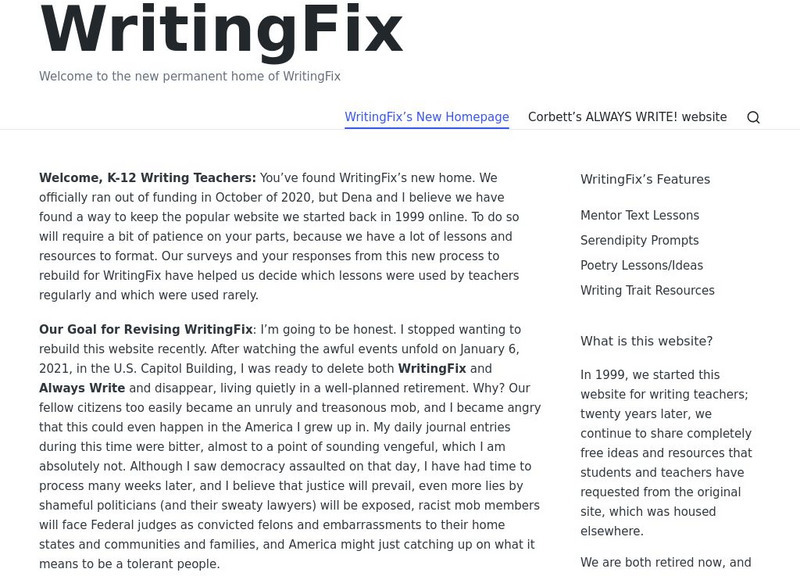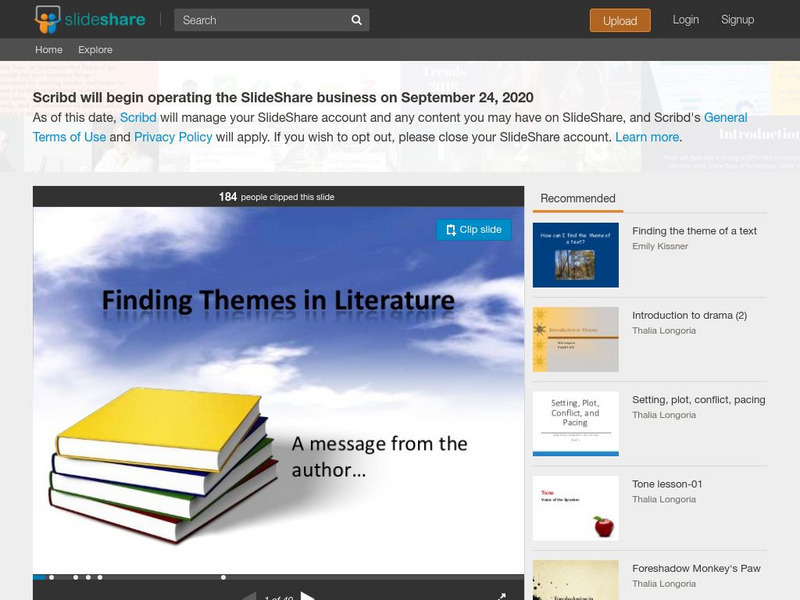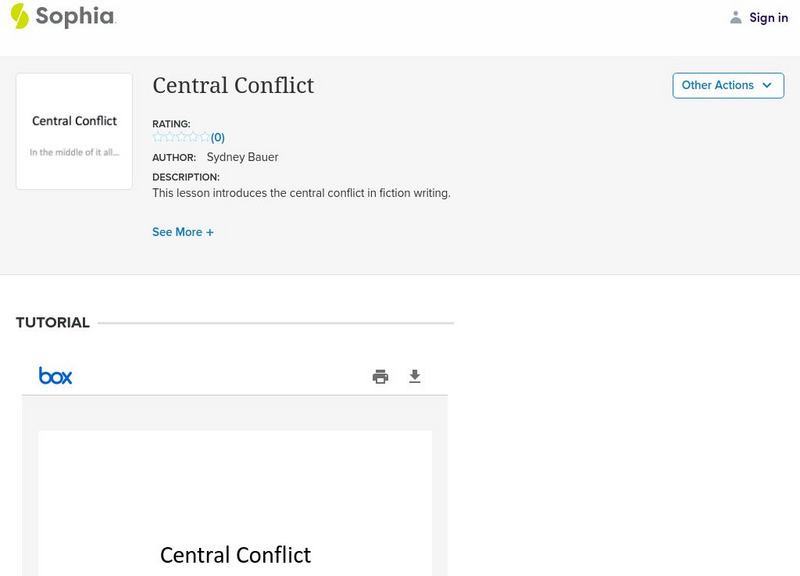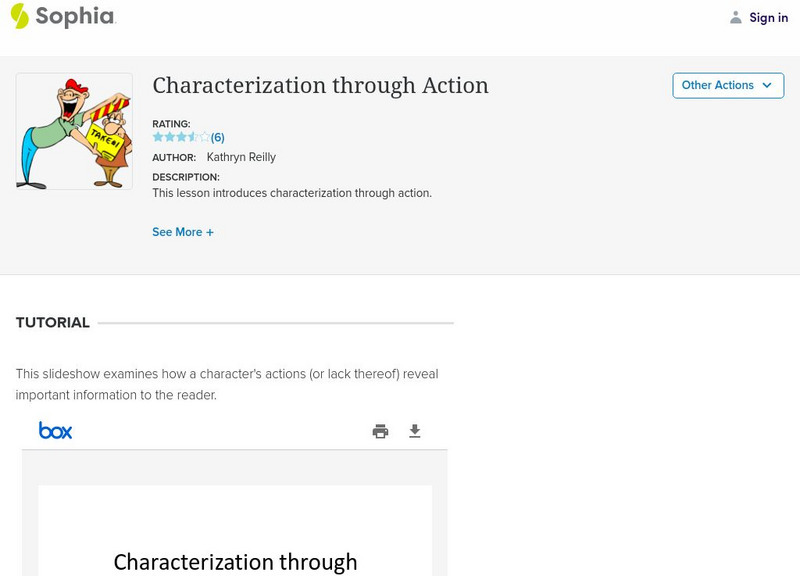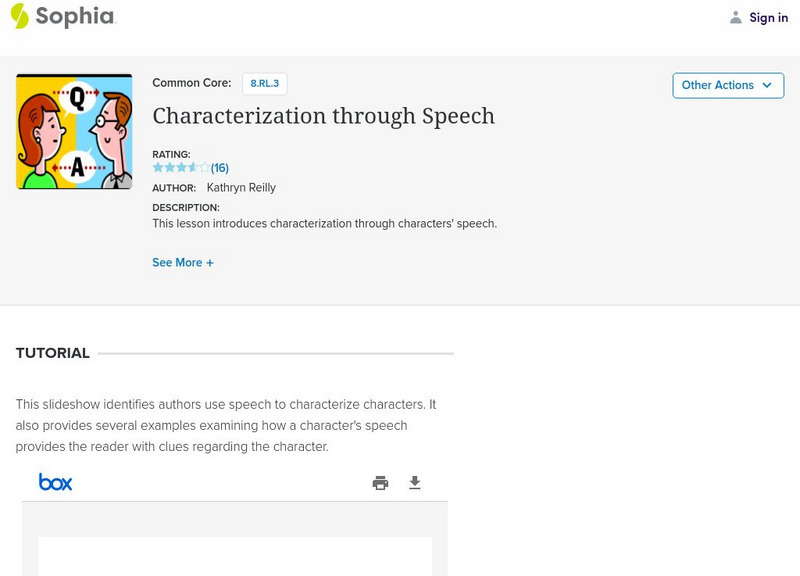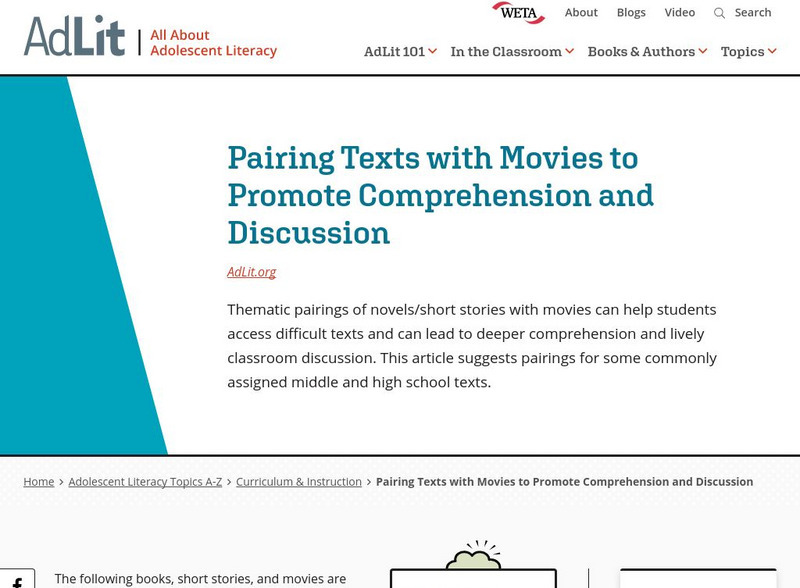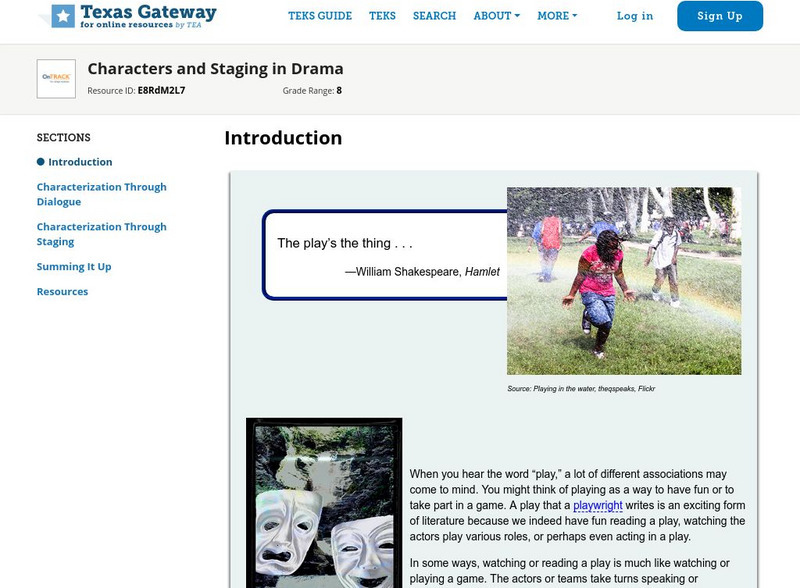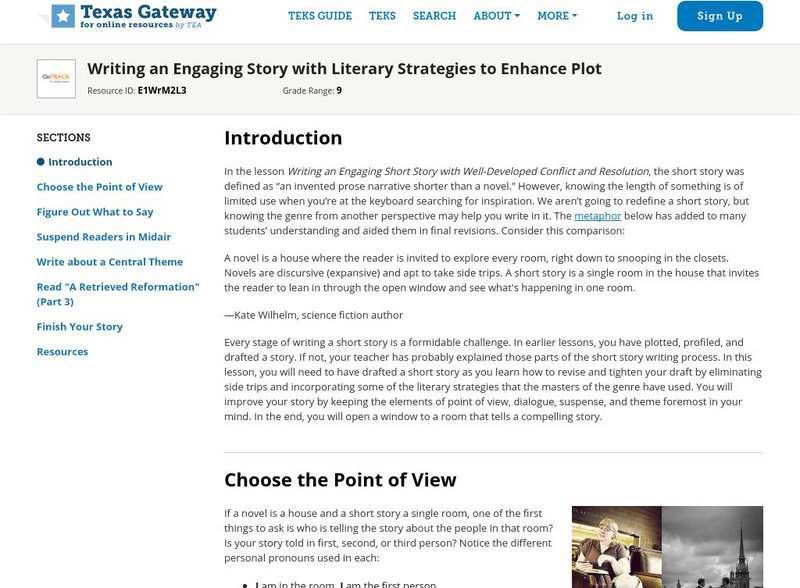Writing Fix
Writing Fix: Actions Speak Louder Than Words
After hearing and discussing an excerpt from Sharon Creech's Walk Two Moons, young scholars will plan to create a unique description of a character that uses memorable actions that "show" a person's character. They will brainstorm verbs...
ReadWriteThink
Read Write Think: Character, Conflict, Resolution, Setting
This interactive lesson allows students to study and analyze the text concepts of character, conflict, resolution, and setting in a "Broadcast news," format.
E Reading Worksheets
E Reading Worksheets: Story Structure
In this learning module, students will learn more about the structure of a short story. Notes and video clips are provided to reinforce understanding of story structure. This module is designed to support Tier I, Tier II, and Tier III...
E Reading Worksheets
E Reading Worksheets: Story Structure Activities
This learning module provides remediation and extra practice with analyzing story structures. Reinforcement for story structures is provided through the two PowerPoint lessons, three quizzes, and four different worksheets.
Read Works
Read Works: Finding Salinger
[Free Registration/Login Required] This passage shares the story of a lost cat. This passage is a stand-alone curricular piece that reinforces essential reading skills and strategies and establishes scaffolding for vocabulary learning....
Tom Richey
Slide Share: Finding Themes in Literature
A slide show with forty slides with explanations, examples, and information on how to determine the theme of a text. RL.9-10.2 and RL.11-12.2 Analyzing Theme.
Sophia Learning
Sophia: Central Conflict
An eight-slide document introducing central conflict in a literary text and providing examples from The Arabian Nights.
Sophia Learning
Sophia: Characterization
This slideshow focuses on characterization including defining and discussing the 5 methods of characterizations: speech, action, description, interaction, and thoughts with examples of each. It also covers the importance of...
Sophia Learning
Sophia: Characterization Through Action
A seven-slide presentation discussing how a character's traits are developed and revealed through action in a literary text.
Sophia Learning
Sophia: Characterization Through Interaction
This slideshow focuses on characterization through interaction; it discusses what character interaction can reveal about a character and what the reader should look for, such as verbs and adverb. It offers scenarios to practice and then...
Sophia Learning
Sophia: Characterization Through Speech
This slideshow lesson focuses on what can be learned about a character through speech. It provides three literary excerpts with comments showing how speech can reveal details, accent, age, and educational background. It also provides...
Annenberg Foundation
Annenberg Learner: Interactives: Literature: What Makes a Good Short Story?
This interactive exhibit takes learners on a literary journey through the classic short story.
AdLit
Ad lit.org: Pairing Texts With Movies to Promote Comprehension and Discussion
Thematic pairings of novels/short stories with movies can help students access difficult texts and can lead to deeper comprehension and lively classroom discussion. This article suggests pairings for some commonly assigned middle and...
Other
Elements of Fiction
Simple discussion of the elements of fiction with a specific section devoted to Freytag's Pyramid (aka "basic plot structure"). A good place to start for gathering information on the structure of narrative.
ReadWriteThink
Read Write Think: Conflict Map
This graphic organizer focuses on conflict: identifying the conflict, listing possible resolutions, and determining the cause of the conflict. It can be used as a reading tool, a writing organizer, or solving a real-life conflict.
Other
Storytelling in the Classroom
There are several steps to becoming a storyteller. Find out what they are and be on your way to becoming a storyteller here! Learn how to find good stories to tell, and how to tell them to an audience effectively.
Texas Education Agency
Texas Gateway: Characters and Staging in Drama
Learn how playwrights characterize their protagonists and antagonists through the dialogue and staging of their plays.
Texas Education Agency
Texas Gateway: Analyze Point of View in Literary Texts/fiction
Identify and understand an author's choice of point of view, including limited versus omniscient and subjective versus objective.
Texas Education Agency
Texas Gateway: Analyze the Central Characters in Literary Text/fiction
Learn how the central characters' qualities influence theme and resolution of the central conflict.
Texas Education Agency
Texas Gateway: Analyze Linear Plot Developments in Literary Texts/fiction
[Accessible by TX Educators. Free Registration/Login Required] You will learn how to use the elements of linear plot development to determine whether and how conflicts are resolved.
Texas Education Agency
Texas Gateway: Development of Characters Through Literary Devices
Rcognize how literary devices such as character foils can create complex characters in a short story.
Texas Education Agency
Texas Gateway: Writing Engaging Stories With Literary Strategies to Enhance Plot
Use various literary strategies and devices, including dialogue and suspense, to enhance the plot in a short story.
Texas Education Agency
Texas Gateway: Characters and Staging in Drama
[Accessible by TX Educators. Free Registration/Login Required] In this lesson, you will analyze how different playwrights characterize, or develop, their protagonists and antagonists through the dialogue and staging of their plays.
ReadWriteThink
Read Write Think: Plot Structure: A Literary Elements Mini Lesson
Contains plans for two lessons that ask middle schoolers to apply Freytag's Pyramid (also known as Freytag's Triangle) to pieces of writing, oral storytelling, and television shows. In addition to objectives and standards, this...
